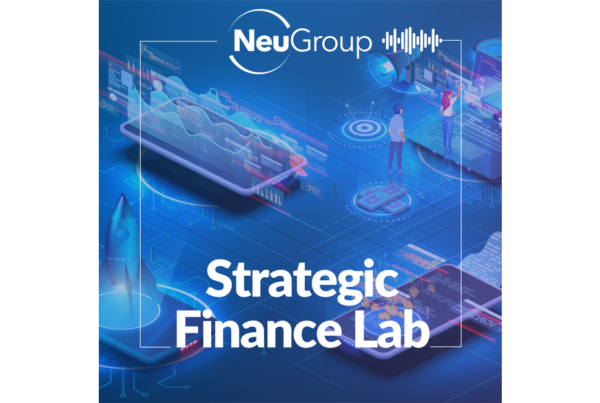
What companies facing pressure from investors to return capital need to consider as they mature and growth slows.
The decision to start paying a dividend to return capital to shareholders is one that growing companies don’t take lightly—and for good reason: the consequences of later lowering or eliminating the quarterly payouts is an undeniably bearish signal in the eyes of most investors. That fact informed discussions about dividends and share repurchases among members of NeuGroup for Large-Cap Assistant Treasurers at their first-half peer group meeting, and in a monthly virtual session.
- One member referenced the nature of romantic relationships to capture the difference between repurchases and dividends: “You date share repurchases, and you marry dividends.”
Capital return considerations. The first question is always whether a company has reached a point in its growth where it should consider returning capital; the second question is picking the form of that return. Balancing financial flexibility and capital allocation is the ultimate consideration as corporates mature, say bankers who work with them.
- Dividends, perceived to be in perpetuity, offer investors a certain payout now. One concern, though, is how they may affect stock valuation. A share repurchase program, meanwhile, tends to solve two issues: it offsets dilution from stock-based compensation and reduces the number of shares outstanding.
- Most companies that pay a dividend do it in conjunction with a share buyback program; and while dividend yield is an important target, capital allocation metrics are expressed in reference to free cash flow.
- Bankers tell NeuGroup Insights that whether to institute a dividend is also resurfacing as a major boardroom conversation topic for more mature companies whose top line growth is decelerating.
Investors clamoring. Interestingly, idle on-balance sheet cash, even in the current interest rate environment, can draw the attention of activist investors looking for enhanced returns and operational efficiency. One member at the H1 meeting mentioned that his company had a large amount of cash on its balance sheet and is predictably hearing from shareholders about issuing a dividend.
- “It’s a conversation we’re having with our board. Investors are saying, ‘if you start paying a dividend, this will open the company up to a whole new group of investors—income investors.’” He asked whether peers had initiated a dividend.
- Among the dividend lessons learned by one member whose company pays one: Once you start, “there is an expectation to increase the dividend, and the debate is around the pace of that.” Dividend yield relative to the peer group becomes an important performance benchmark, potentially resulting in pressure to increase the payout.
- Another member is in a similar situation: “The noise from our investors is getting louder. Are we at that point in our company where we should start paying dividends?” He added that the decision isn’t simple given that cash is getting tighter, and the macro horizon looks tough. Flexibility in uncertain times is important. How do you manage EPS growth going into an earnings recession?
Not so special? The member discussing the issue with the board asked about options, including a special dividend, a non-recurring distribution of company assets, usually in the form of cash. They’re often tied to a specific liquidity event like an asset sale.
- One member whose previous employer had taken that route said he was not in favor of the move. “We issued a special dividend, then we saw a decrease in the stock price by exactly the same amount,” he said.
- And while uncommon, special dividends are on the rise this year, noted NeuGroup senior director Scott Flieger. “It is rare to see investment-grade companies issue them unless it is tied to the sale of an asset,” he said.
- “During the late 1980s, due to the LBO era, they were used as an anti-takeover strategy,” he added. “In the last 15 years or so, they have been used by private equity firms to pay themselves; so they effectively get back the equity, typically in the range of 30% to 35%, that they put up to take a company private, essentially reducing their downside risk.”
Divorcing (or diminishing) a dividend. In the monthly session on dividends and share repurchases—where the marriage vs dating comparison was made—one member quipped, “We just divorced our dividend.” Actually, they clarified, the company hadn’t eliminated the dividend but had reduced it substantially.
- “We had this really big dividend,” they explained. “There was this feeling that we were an aristocrat. But is that really the priority of our business? For the health of the business and to create long-term shareholder value, we needed to lower the dividend. We were leasing away our future.”
- While the decision was difficult, the company’s decision-makers concluded it made sense. “It was the right thing to do,” the member said. The stock is trading lower than before the reduction, “but not any worse than expected.”
Share repurchase complexities. The member who asked peers about initiating a dividend said his company had a history of buying back shares. “There is a lot of equity-based compensation,” he said. “We’re fortunate that our share price has gone up a lot. But at what point are you just buying your shares to pay your employees?”
- When the topic of doing more share repurchases instead of initiating a dividend came up, one member said, “I ran a pretty aggressive share repurchase program at a previous company. It was a systematic program that kind of worked like a dividend.”
- Another member with a similar story said repurchase programs can be difficult to walk away from as well. “For us we also do a lot of share-based compensation, so there’s an expectation that we’ll at least buy back our dilution. When compensation is share-based, buybacks can be a bit of a drug.”
- He went on to say that when the repurchase discussion arises it seems that “the answer is never fewer buybacks. I’ll tell you that.”
Final word. The overwhelming market perspective, bankers say, is that as long as companies continue to deliver growth, capital allocation policy is secondary. However, as businesses mature and growth tapers, investors’ focus shifts to operational efficiency, free cash flow generation and capital allocation. More mature corporates find themselves under pressure to improve shareholder returns and to conform to the capital allocation policy in their peer group.


